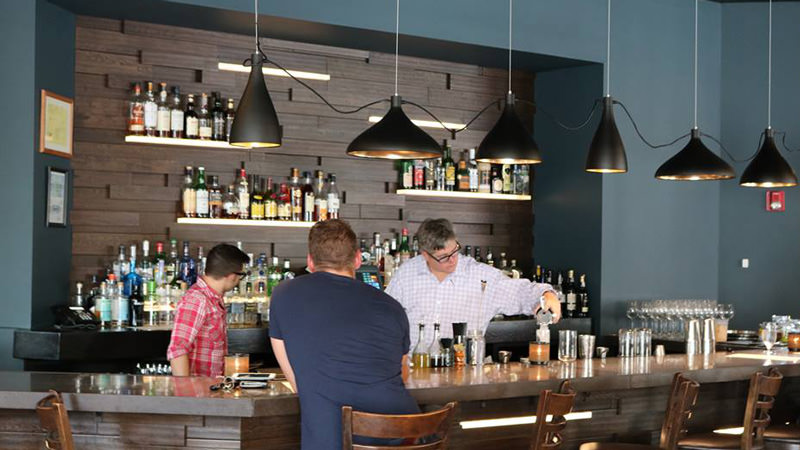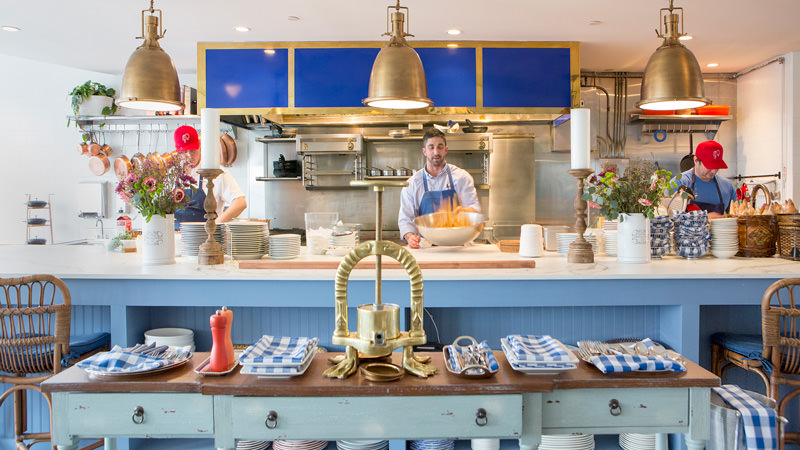It’s sloppy at some places,” Pittsburgh sommelier John Wabeck says of the wine scene in his adopted hometown. “In the summer, you can still get warm red wine. I’d love to stamp that out.”
Known as the Steel City, Pittsburgh is more often associated with Boilermakers — a shot of whiskey and a pint of beer — than wine. Its history as an industrial town focused on steel production led to a blue-collar reputation aligned with beer. A brew on the table at the end of a long day provided a simple reprieve from a difficult factory life. Wine, not so much.
Though steel is no longer the major industry in Pittsburgh, its union tendencies live on. “People aren’t going throw down $300 on a bottle because that’s just not what they do,” Wabeck says. “It’s considered frivolous. They have the money to do it, but they will say, ‘This $60 Chardonnay is perfect.’”
Wabeck is not out to change the world. But he is interested in improving wine knowledge in Pittsburgh, even if it takes one sommelier at a time.

A chef-turned-somm, Wabeck arrived in western Pennsylvania five years ago, fresh from stints in the Napa Valley and Washington, D.C. and armed with an Advanced Sommelier title from the Court of Master Sommeliers. He found the wine knowledge at local restaurants slim. There were no formal tasting groups for the city’s bartenders and servers to hone their crafts. Consumers looked at going out with a first-beer-then-liquor attitude. Wine, if it came up at all, was a side note.
Wabeck led the charge to expand the wine list at Spoon, a popular restaurant where he worked at the time, from a mere 80 bottles to close to 450. Still, he admits, it never became a beverage destination. “People never really said, ‘Wow, I’m coming here to drink wine,’” he says.
That’s beginning to change as a flourishing segment of Pittsburgh consumers is now giving wine a seat at the table. There is a growing population of young professionals in the area, thanks to the affordable cost of living and the expanding technology industry, including offices of Google and Facebook. In the past, talented graduates of the local Carnegie Mellon University would have split for a larger city. Now, they are staying put to launch companies and live in swanky suburbs. In fact, the average age of Pittsburghers is declining, hovering around just 32, according to Visit Pittsburgh. That has created a demand for artisan beverages in all categories, according to Pete Landis of the Pennsylvania Restaurant and Lodging Association.
“It used to be if a restaurant had wine, it was red or white,” Landis says. “It was more the union guys drinking Iron City beer. Now, those same bars are serving beer and shot, but also Fernet-Branca on tap.”
Wabeck’s work in the wine scene has certainly made an impact. He believes that understanding beverages to a deep level and providing restaurant guests with premier service are critical to success as a sommelier. When he arrived in Pittsburgh — the move, he jokes, was for his dog Dutch, but really for his girlfriend —he couldn’t find a group of sommeliers hosting regular tastings to learn about regions, understand flavors, and prepare for the Court of Master Sommelier tests. Only a few sommeliers in the city had taken the exam. He quickly kicked off his own tasting group, bringing together local wine distributors and bartenders at his house on Sunday mornings.
“There was no structure,” Wabeck says. “It’s not that they didn’t have knowledge, but they didn’t realize how in-depth you need to be. I’ve had conversations about Slovenian and Greek wine in Pittsburgh. You have to be able to hold your own in those conversations. That’s what has rubbed off on the players in the wine scene.” He says now more than a dozen wine professionals have the Certified Sommelier title, and one of his tasting group members, Sean Rosenkrans, just passed his Advanced-level exam in March.
The sommeliers are taking that experience and vocabulary to their hospitality establishments. Rosenkrans works at Allegheny Wine Mixer, a local bar that highlights different wine regions each season and hosts funky events like wines paired with opera arias. Bars focused on more esoteric beverages, like Grapperia’s amari collection, have packed happy hours with customers sipping aperitifs, and Poulet Bleu, a recently opened French bistro from Richard DeShantz, offers a predominantly French wine list — thanks to the work of Wabeck.

Located along a restaurant-heavy stretch of Lawrenceville, a working-class, neighborhood-turned-hipster food destination, Poulet Bleu serves classic French fare in a space that resembles an elevated farmhouse. The bar offers drip absinthe and libations like Sidecars and Brandy Alexanders, while the wine list takes center stage at the table with Wabeck as the conductor. The list includes standbys like Chablis but also more eccentric bottlings from lesser-known regions such as the Jura.
“The focus of Poulet Blue is wine, so it’s assumed people will drink wine,” he says. Guests generally opt to pair their meals with wine instead of beer or cocktails. “They assume it, and we assume it. That will generally end in a bottle or a few different glasses at each table.”
Still, he says, consumers have a long way to go in their relationship with wine. Poulet Bleu does not pour common varieties like Pinot Grigio, meaning that the staff needs the awareness of lateral options, such a French white blend that mimics the flavors of Pinot Grigio, and practice explaining the similarities. “Point the guest in the right direction and they’ll get excited because they never thought they’d like something like a Grenache,” Wabeck says.
He also remains extremely conscious of bottle pricing, with hardly any labels topping the $100 mark. Even with the younger crowds who might be apt to spend more, it’s realistically only $20 to $30 higher, he explains.
Poulet Bleu is only two months old, but has already received a James Beard Award nomination. This spring, the restaurant will open a second floor for additional seating and a roof deck for summer sipping. As for Wabeck, he’ll continue to innovate his wine list, keep up with his tasting group, and serve red wine at the correct temperature.
“For me, the future of Pittsburgh is not going to be wine or beer or cocktails — it’s going to be all three,” Wabeck says. “That’s what our job is. We’re beverage people. That’s the future, if all these 30 people that come to my house at 10 o’clock in the morning reach that level of expertise and humility. It’s going to be better service, better knowledge, and better care of all beverages.”
